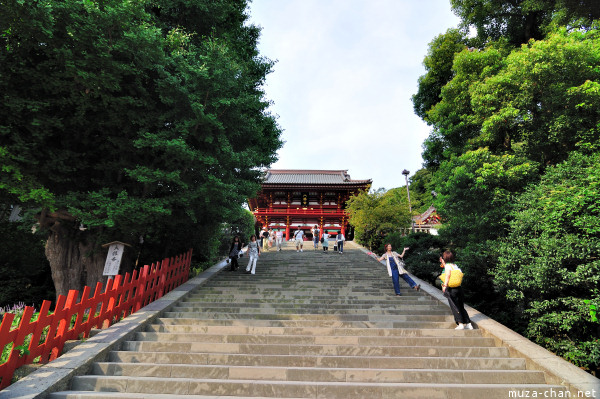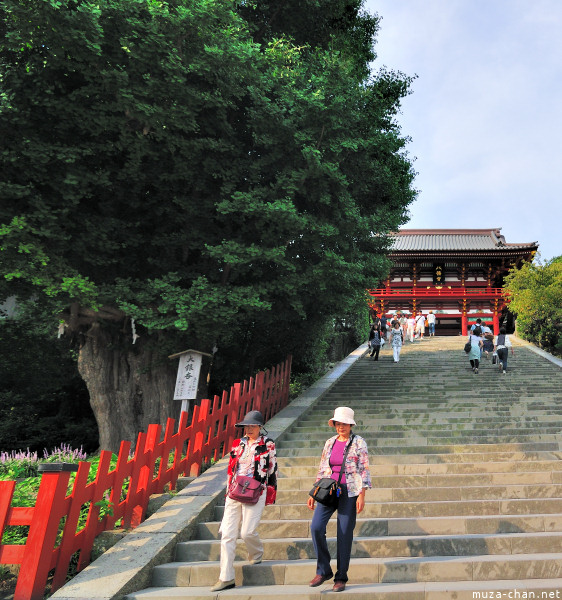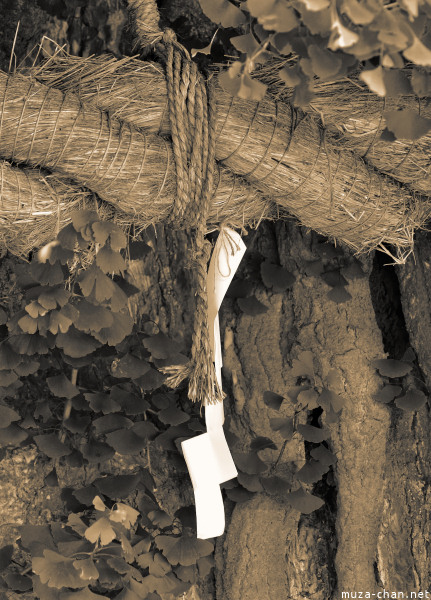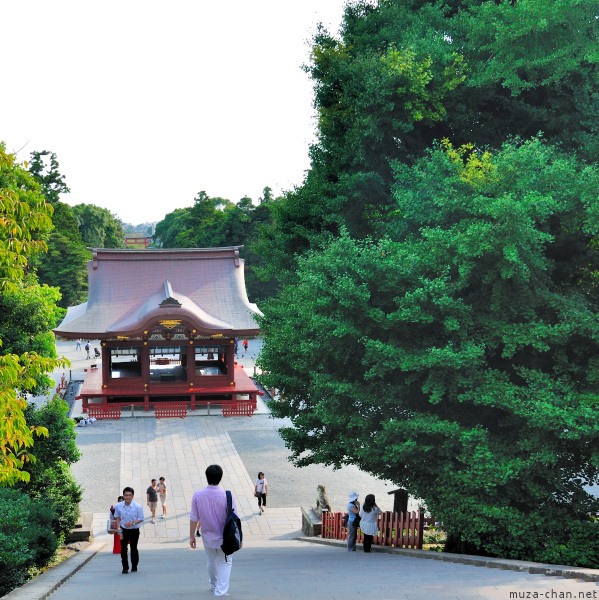In order to reach the main building of the Tsurugaoka Hachimangu Shrine, you have to climb 61 steps.
On the left side, it was impossible not to notice an impressive 1000-year old ginkgo tree, 30 meters tall, which remained in history because of an event that took place in 1219.
Unfortunately, this magnificent tree died yesterday morning (March 10), uprooted by a huge storm that swept the region.
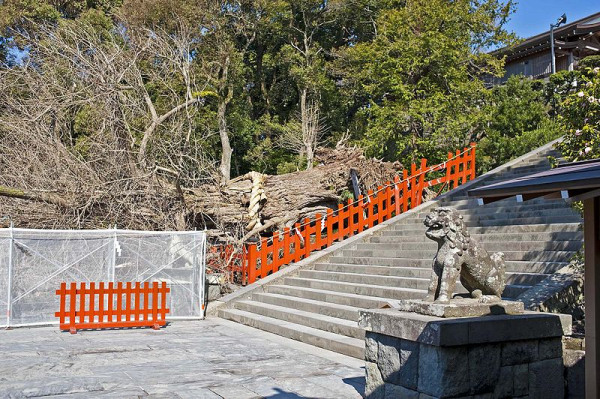 The 1000-year old ginkgo tree at Tsurugaoka Hachiman-gū Shrine, uprooted by storm. Image via: Wikipedia
The 1000-year old ginkgo tree at Tsurugaoka Hachiman-gū Shrine, uprooted by storm. Image via: WikipediaWhen I photographed it 6 months ago, it was strong and healthy and marked with a shimenawa. At Shinto shrines, shimenawa are used to mark the places inhabited by Kodama spirits and cutting down these trees is strictly forbidden.
The legend says that on February 12, 1219, Minamoto no Yoshinari, also known by his monk name Kugyo, hid behind this tree, planning to assassinate Minamoto no Sanetomo, the third Shogun of the Kamakura Shogunate.
Kugyo was the second son of the second Shogun of Kamakura, Minamoto no Yoriie, and the nephew of Minamoto no Sanetomo.
Kugyo managed to kill the Shogun, but he was captured by a samurai and beheaded the next day.
However, according to Azuma Kagami, where this story was recorded around the year 1266, Kugyo attacked the Shogun “from the side of the stone stairs", and the ginkgo tree wasn’t referred.
The ginkgo tree was mentioned for the first time in the Shinpen Kamakurashi, a much later writing, from the Edo period.
Anyway, in the oral tradition, the tree became known with the name kakure-icho (隠れ銀杏 - hidden ginkgo).
In 1955, the tree was designated by the Kanagawa Prefecture as a natural monument…
Pentru a ajunge la clădirea principală a altarului Tsurugaoka Hachimangu din Kamakura trebuie urcate 61 de trepte.
În partea stângă a scării, era imposibil să nu observi un impresionant arbore ginkgo, bătrân de 1000 de ani, având peste 30 de metri înălţime, care a rămas în istorie datorită unui eveniment care a avut loc în anul 1219.
Din păcate, ieri dimineaţă (10 martie), acest arbore magnific s-a prăbuşit, doborât de o puternică furtună care s-a abătut asupra regiunii.
 The 1000-year old ginkgo tree at Tsurugaoka Hachiman-gū Shrine, uprooted by storm. Image via: Wikipedia
The 1000-year old ginkgo tree at Tsurugaoka Hachiman-gū Shrine, uprooted by storm. Image via: WikipediaCând l-am fotografiat acum şase luni era puternic şi sănătos şi era marcat cu o shimenawa. La altarele shinto se folosesc shimenawa pentru a marca locurile care sunt locuite de Kodama, iar tăierea copacilor astfel marcaţi este strict interzisă.
Conform legendei, pe 12 februarie 1219, Minamoto no Yoshinari, cunoscut şi cu numele de călugăr Kugyo, s-a ascuns în spatele copacului înainte de a-l asasina pe Minamoto no Sanetomo, al treilea shogun al Shogunatului Kamakura.
Kugyo era al doilea fiu al celui de-al doilea shogun al Shogunatului Kamakura, Minamoto no Yoriie şi nepotul lui Minamoto no Sanetomo.
Kugyo a reuşit să-l omoare pe shogun, dar fost prins de un samurai şi decapitat a doua zi.
Conform Azuma Kagami, care a fost scrisă în jurul anului 1266, Kugyo l-a atacat pe shogun venind dinspre scări, iar despre copac nu se spune nimic.
Copacul este menţionat prima dată în Shinpen Kamakurashi, lucrare care a fost scrisă mult mai târziu, în Perioada Edo.
Însă în tradiţia orală copacul a rămas cu numele de kakure-icho (隠れ銀杏 - ginkgo ascuns).
Arborele a fost declarat monument la naturii de către Prefectura din Kanagawa în 1955…
